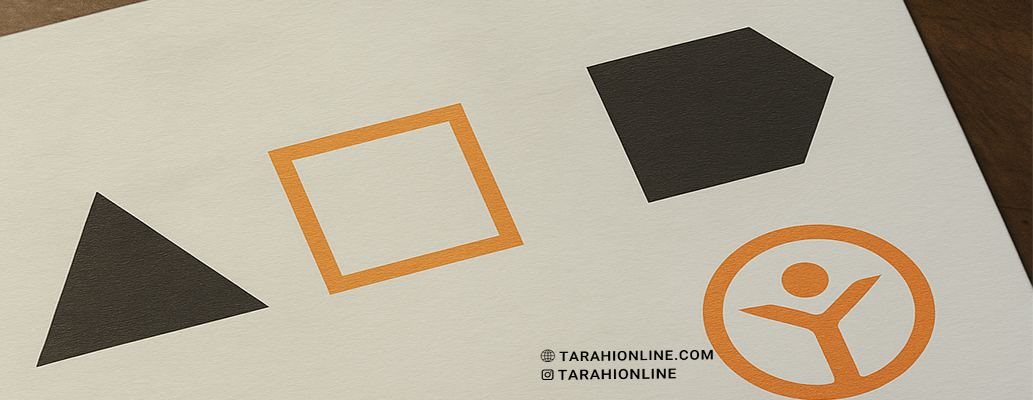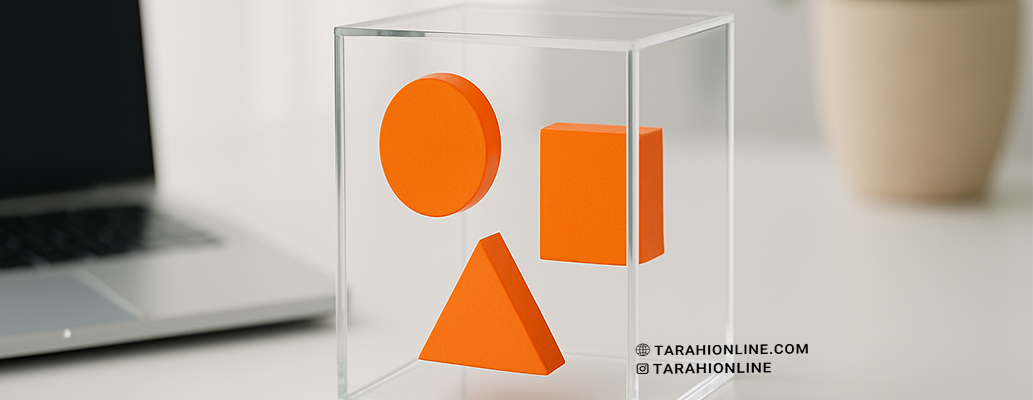
The psychology of shapes is a powerful tool in logo design that can subtly convey emotions, values, and brand messages to audiences. Different shapes, such as circles, squares, or triangles, evoke distinct feelings and meanings, and choosing the right ones can significantly enhance a logo’s impact. This article explores the psychology of shapes, their effects on audiences, and how to use them effectively in logo design.
What is the Psychology of Shapes?
The psychology of shapes studies how visual shapes influence human perception, emotions, and behavior. Each shape carries implicit meanings that can align with a brand’s identity. In logo design, shapes serve as primary or supporting elements to communicate specific messages. For example, Apple’s circular bitten apple logo conveys creativity and accessibility.
Meanings of Key Shapes in Logo Design
A) Circle
-
Meaning: Unity, harmony, friendship, community, and eternity.
-
Emotions Evoked: Warmth, friendliness, security, and positivity.
-
Applications: Ideal for brands focusing on connection, community, or creativity (e.g., Starbucks or Target logos).
-
Example: Circular logos in tech or charity brands convey accessibility and inclusivity.
B) Square and Rectangle
-
Meaning: Stability, strength, professionalism, and trust.
-
Emotions Evoked: Order, balance, reliability, and solidity.
-
Applications: Suitable for financial, legal, or tech brands aiming to project trust and strength (e.g., Microsoft or Adobe logos).
-
Example: Squares in bank or construction company logos reinforce stability.
C) Triangle
-
Meaning: Dynamism, power, growth, and direction.
-
Emotions Evoked: Energy, movement, innovation, and ambition.
-
Applications: Great for sports, high-tech, or innovative companies (e.g., Adidas or Caterpillar logos).
-
Example: Upward triangles convey progress and motivation, while downward triangles suggest stability.
D) Lines
-
Horizontal Lines: Calmness, stability, and trust (e.g., IBM logo).
-
Vertical Lines: Strength, growth, and solidity (e.g., Cisco logo).
-
Diagonal Lines: Dynamism, movement, and energy.
-
Applications: Lines guide the viewer’s eye or reinforce the brand’s message.
E) Organic and Curved Shapes
-
Meaning: Creativity, nature, and flexibility.
-
Emotions Evoked: Comfort, freedom, and friendliness.
-
Applications: Ideal for brands related to nature, health, or lifestyle (e.g., Whole Foods logo).
-
Example: Organic shapes in food or eco-friendly brands convey naturalness.
Steps to Use the Psychology of Shapes in Logo Design
A) Understand the Brand’s Identity
-
Brand Analysis: Identify the brand’s values, mission, and personality. For example, a tech brand may need stability (square) or innovation (triangle).
-
Target Audience: Determine what emotions your audience responds to. Younger audiences may prefer dynamic shapes (triangles or diagonal lines).
-
Competitors: Analyze competitors’ logos to choose distinctive, industry-relevant shapes.
B) Choose the Right Shape
-
Align with Brand Message: Select shapes that reflect the desired message. For instance, a charity might use a circle to convey community.
-
Balance in Design: Combine shapes to create a balanced logo. For example, Nike’s swoosh uses dynamic curves to suggest movement.
-
Simplicity: Opt for simple, minimal shapes to ensure the logo is legible and impactful across sizes.
C) Combine with Color and Typography
-
Colors: Pair shapes with appropriate colors. For example, blue circles enhance trust and friendliness.
-
Typography: Rounded fonts (e.g., Circular) complement circles, while angular fonts (e.g., Futura) work well with squares and triangles.
-
Contrast: Use contrast between shapes and backgrounds to make the logo stand out.
D) Design and Test
-
Design Tools: Use vector software like Adobe Illustrator or Figma for precise shape creation.
-
Legibility Test: Check the logo in small sizes (e.g., business cards) and large formats (e.g., billboards) to ensure shapes remain clear.
-
Feedback: Show the logo to target audiences or other designers to confirm the shapes convey the intended message.
Key Tips for Using the Psychology of Shapes
-
Cultural Alignment: Shape meanings may vary across cultures. For example, circles often symbolize unity, but verify any culture-specific meanings.
-
Avoid Clutter: Overusing shapes can make the logo complex and confusing.
-
Inspiration from Successful Brands: Study logos like BMW (circle), IBM (horizontal lines), or Delta (triangle).
-
Visual Balance: Combine shapes to create a harmonious and balanced logo.
-
Flexibility: Ensure the logo remains effective in monochrome or on various backgrounds.
Challenges and Solutions
-
Interpretation Complexity: Shapes may have different meanings for various audiences.
-
Solution: Test the logo across different cultures and age groups.
-
-
Legibility in Small Sizes: Complex shapes may lose clarity in small formats.
-
Solution: Use simple, minimal shapes.
-
-
Brand Misalignment: Choosing the wrong shape can weaken the brand’s message.
-
Solution: Align the shape with the brand’s identity and values.
-
Maintaining the Logo After Design
-
Brand Guidelines: Create a brand guideline specifying how to use shapes in the logo (size, color, spacing).
-
Consistent Usage: Apply the logo consistently across all media (websites, social media, print).
-
Cautious Updates: If redesigning, preserve the core shapes to maintain brand identity.
The psychology of shapes is a powerful tool in logo design that can subtly convey a brand’s message to its audience. By selecting appropriate shapes—like circles for friendliness, squares for stability, or triangles for dynamism—and pairing them with harmonious colors and typography, you can create a logo that is both appealing and aligned with the brand. Testing the logo in various contexts and drawing inspiration from successful brands will help you effectively use shapes to design a logo that leaves a lasting impression on audiences.
The Tarahi Online graphic and logo design team, with over ten years of experience in professional graphic and logo design, is ready to assist you and bring your ideas to life. Contact us to submit your request or place an order.

